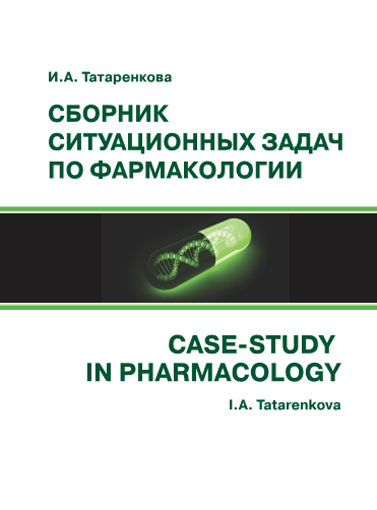
Научная электронная библиотека
Монографии, изданные в издательстве Российской Академии Естествознания
Chapter 2. AUTONOMIC NERVOUS SYSTEM PHARMACOLOGY
9. A man aged 45 years presented with gradual onset complains of double vision, drooping eyelids, difficulty in chewing food and weakness of limbs which is accentuated by exercise. The symptoms fluctuate in intensity over time. A provisional diagnosis of myasthenia gravis is made.
(a) Can a pharmacological test be performed to confirm/refute the diagnosis?
(b) In case the diagnosis is confirmed, can this disease be cured by medication?
(c) Is there a surgical solution for this illness?
10. A poisonous gas is released in the London underground. Passengers are brought to the surface by emergency workers in protective clothing. The surviving passengers are sweating, have pinpoint pupils, bradycardia, difficulty in breathing, and are salivating copiously. Some start to have convulsions.
(a) What type of agent was released?
(b) What is the mechanism of the poisoning?
(c) What should be done?
11. A patient presents in the Emergency Department in great distress and with the following signs and symptoms: bizarre behavior, delirium, facial flushing, clear lungs, no wheezing, rales, high heart rate; absence of bowel sounds; distended abdomen, full bladder; hot, dry skin, absence of lacrimal, salivary secretions; very high fever; dilated pupils that do not respond to light. Identify the drug class that was responsible.
12. A 30-year-old woman is being prepared for anesthesia before exploratory surgery for a mass in her neck. In addition to using an inhalation anesthetic, we give a drug that causes complete paralysis of the skeletal muscles. What drug was given to the patient?
13. A patient receives a single injection of succinylcholine to facilitate an endoscopic procedure. The dose is correct for the vast majority of patients, and normally effects of this drug abate spontaneously over a couple of minutes. This gentleman remains apneic for an extraordinary long time. A genetically based
aberrant cholinesterase is eventually determined to be the cause. What would we administer if we were concerned about this unusually lengthy drug response?
a) Atropine
b) Bethanechol
c) Neostigmine
d) Nothing
e) Physostigmine
f) Tubocurarine
14. A patient received a single dose of succinylcholine for preoperative intubation. Skeletal muscle paralysis during a 3-h surgery is maintained by a long-acting non-depolarizing type (i.e., curare-like) neuromuscular blocker. Surgery is over and the plan is to reverse the skeletal muscle paralysis. What adjunct is administered first to block unwanted effects of the reversing agent on smooth muscles and glands, and then what drug is used to actually reverse the skeletal muscle paralysis?
15. A patient with a history of asthma experiences significant bronchoconstriction and urticaria, and histamine is a main mediator in these responses. Which of the following drugs may pose extra risks for this patient – not because it quite effectively releases histamine from mast cells?
a) Atropine
b) Isoproterenol
c) Neostigmine
d) Pancuronium
e) Propranolol
f) Tubocurarine
16. You are volunteering in a hospital in a very poor part of the world. Their drug selection is limited. A patient presents with acute cardiac failure, for which you preferred drug is dobutamine, given intravenously. However, there is none available. Which other drug, or combination of drugs, would be a suitable alternative? (All these drugs are available in parenteral formulations.)
a) Dopamine (at a very high dose)
b) Ephedrine
c) Ephedrine plus propranolol
d) Norepinephrine plus phentolamine
e) Phenylephrine plus atropine
17. We administer an “effective” dose of a drug and observe the following responses:stimulates the heart; dilates some blood vessels but constricts none; dilates the bronchi; raises blood glucose levels; neither dilates nor constricts the pupil of the eye. Which drug caused these responses?
18. A 65-year-old man complains of losing his vision. Retinal examination reveals optic nerve cupping. Peripheral vision loss is observed on visual field tests, and his intraocular pressure is increased. Following treatment with the drug, he has improved visual acuity and decreased intraocular pressure. What drug was given to the patient?
